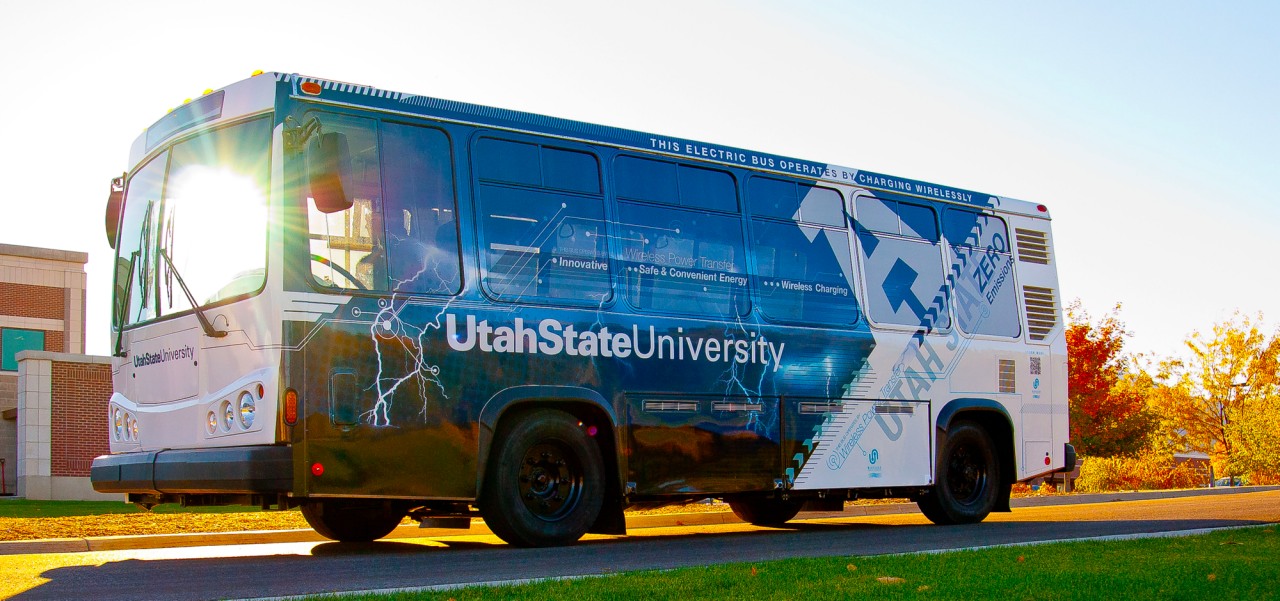If electric vehicles (EVs) are to become ubiquitous we have a number of hurdles to overcome. These include:
- Improvements to batteries not only to make them hold a charge longer but to also recharge faster.
- The building of an electric infrastructure with recharge capability not just at one point but at many.
- Eliminating the plug outlet and wire from EV technology design.
In previous blogs I have talked about new battery technology and electric infrastructure. I have also written about wireless power transfer technology such as Nissan has developed for its 2013 Leaf. Now wireless power transfer is coming to public transit with the introduction of the first-of-a-kind electric bus. It’s a product of the engineering and scientific team at Utah State University’s Research Foundation.
The bus includes technology capable of 90% electrical transfer efficiency of 5 to 25 Kilowatts over a 25 centimeter (10 inch) air gap using wireless power transfer. When the bus is idle overnight it gets recharged by parking over a wireless charging plate (see image below). While enroute similar embedded charging plates at each passenger stop provide a continuous recharge.
The university has spun off the technology creating WAVE Inc. The new company is partnering with the Utah Transit Authority with plans to launch its first commercial demonstration this year running on the University campus. The demonstration will feature a 12 meter (40-foot) bus routed through the campus. By the summer the bus will be capable of wireless power transfer of up to 50 Kilowatts, an improvement over the current bus. With this type of power transfer commercial feasibility of wireless EV technology for public transit becomes viable.
Wesley Smith, the CEO of WAVE describes how the technology can be as reliable as fossil-fuel powered buses. “Current battery limitations prevent an all-electric transit bus from operating all day from an overnight charge,” he states. “WAVE solves that problem by charging the bus wirelessly during its daily operations when the bus stops to load and off-load passengers.”










